Procedures
Weight loss (bariatric) surgery is a unique field, in that with one operation, a person can be potentially cured of numerous medical diseases including diabetes, hypertension, high cholesterol, sleep apnea, chronic headaches, venous stasis disease, urinary incontinence, liver disease, and arthritis. Bariatric surgery is the only proven method that results in durable weight loss. This proven surgical approach, combined with the dismal failure of dieting, the marked improvement in quality of life and the quick recovery with minimally invasive techniques, has fueled the surge in the number of bariatric procedures being performed annually over the last decade.
Weight loss operations can be divided into restrictive procedures and malabsorptive procedures. Malabsorptive procedures reduce the absorption of calories, proteins and other nutrients. In contrast, restrictive operations decrease food intake and promote a feeling of fullness (satiety) after meals. Some operations are a combination of both. The gastric bypass (open and laparoscopic), the sleeve gastrectomy, the laparoscopic adjustable band and the biliopancreatic diversion (with or without the duodenal switch) are the primary procedures used currently.
While the majority of patients who undergo these procedures are very successful, no procedure is perfect. Only through an honest discussion with a bariatric surgeon can patients decide which procedure may be best suited for them.
Laparoscopic Roux-En-Y Gastric Bypass
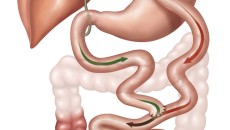
A small pouch is formed from the top part of the stomach and a portion of the small intestine is bypassed. This way weight loss is achieved in two ways, through restriction of the amount of food one can eat and through decreased absorption of calories.
Read MoreLaparoscopic Sleeve Gastrectomy
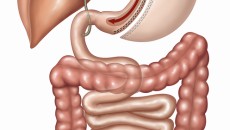
The sleeve gastrectomy is a restrictive procedure that causes weight loss by reducing the size of the stomach to initially hold about three ounces. Seventy-five to 80 percent of the stomach is surgically removed; there is no re-routing of intestines.
Read MoreReShape Procedure (Intra Gastric Balloon)
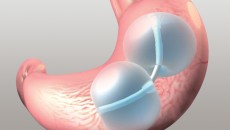
The ReShape Procedure is an FDA approved, non-surgical approach to weight loss that is proven to help people achieve and maintain significant weight loss. The ReShape Procedure was specifically designed for patients with a lower BMI (between 30–40).
Read MoreLaparoscopic Bilio Pancreatic Diversion with duodenal switch
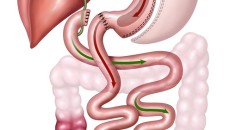
The BPD-DS procedure includes a vertical sleeve gastrectomy, which reduces the stomach along the lesser curve of the stomach, effectively restricting its capacity thereby limiting food intake.
Read MoreRevision weight loss surgery
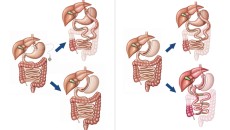
These are surgical procedures that are performed on patients who have already undergone a previous form of bariatric surgery and have either had complications from such surgery or have not successfully achieved significant weight loss results or resolution of comorbidities from the initial surgery.
Read MoreLaparoscopic Adjustable Gastric Band
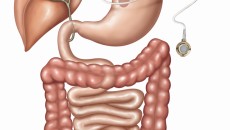
A silicone band is placed around the top of the stomach forming a small pouch and a small opening for food to pass through. This pouch will restrict the amount of food one is able to eat. The band is adjusted through the injection of saline water into a port placed below the skin in the abdomen.
Read More
